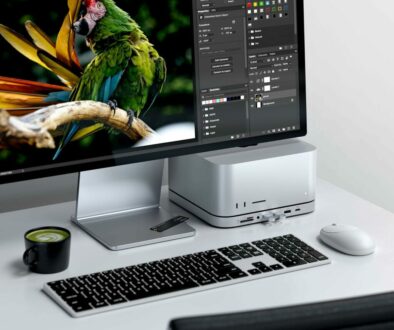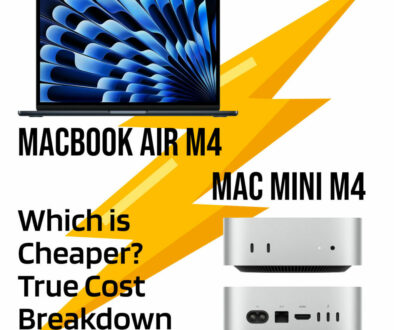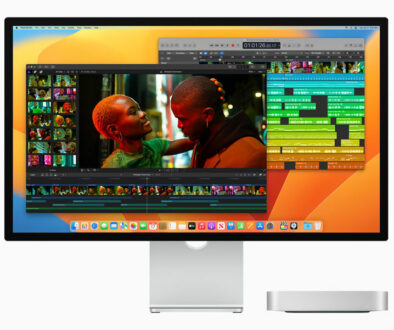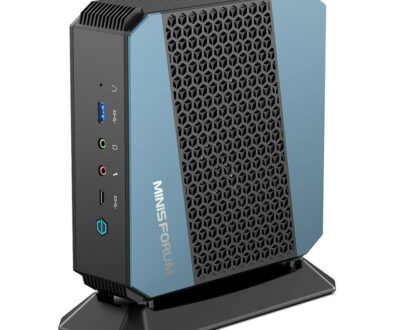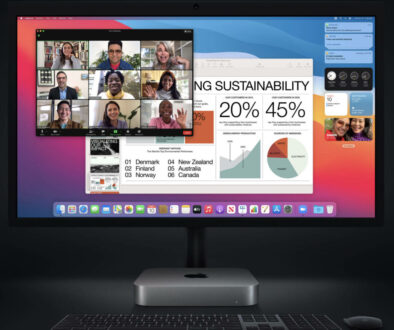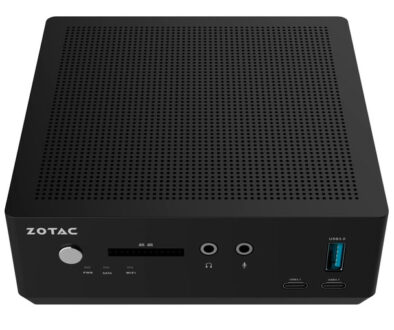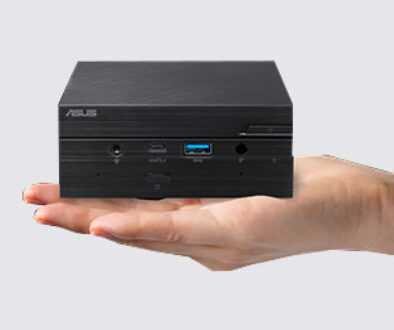Compact Desktops for Students: Why choose one, what to look for & best options
For students navigating the demands of modern education — from virtual lectures and research papers to coding assignments and multimedia projects — having the right computing setup is more important than ever. While laptops offer portability and full-size desktops boast raw power, compact desktops are emerging as the perfect middle ground: delivering strong performance, expandability, and value in a space-saving design.
Unlike bulky gaming rigs or power-hungry workstations, compact desktops are built with efficiency in mind. They’re ideal for students living in dorm rooms, shared apartments, or small home offices where space is limited but productivity matters. These systems combine strong processing power , quiet operation , and energy efficiency, making them a smarter long-term investment than many budget laptops.
Whether you’re majoring in computer science, graphic design, business, or the humanities, a well-chosen compact desktop can support everything from word processing and video conferencing to light creative work and software development — all without taking up half your desk.
In this article, we’ll explore why compact desktops are a smart choice over laptops and full-size towers , what to look for when shopping for one, and our top picks across different budgets and use cases — all tailored to help students make informed, future-proof tech decisions.
Why Choose a Compact Student Desktop
(over say Full-Size Desktop, Gaming Desktop, or even a Laptop)
Compact student desktops strike the ideal balance between power, price, and practicality — making them a smart choice over full-size alternatives for many learners. Unlike bulky full-size towers or high-powered gaming rigs, compact desktops are designed to save space, run quietly (or even silent), and consume less energy, which is perfect for small desks in dorm rooms, shared apartments, or family homes. They also typically generate less heat, contributing to a cooler and quieter study environment.

Visit Minisforum Store on Amazon
Compared to gaming desktops, compact models are more affordable and far more practical for academic use. While gaming rigs often come with flashy designs and high-end GPUs, most students simply don’t need that level of power (or noise) for coursework, research, and Zoom calls. Compact desktops also tend to be more energy-efficient and easier to maintain or upgrade in the long term.
What about laptops? While laptops offer portability, they often compromise on screen size, performance per dollar, and ergonomics — all of which are important for students studying at a fixed location most of the time. A compact desktop paired with a full-size monitor, keyboard, and mouse (plus the right desk and work chair) promotes better posture and productivity, and it’s easier to upgrade components like storage or memory when needed. Additionally, compact desktops generally offer better thermal performance, meaning they can sustain heavier tasks without throttling or overheating — a common limitation in budget laptops.
Compact desktops are ideal for students who don’t need to carry their system around daily but still want a reliable, efficient, and cost-effective solution for academic success.
| Feature / Criteria | Compact Desktop | Laptop | Gaming Desktop |
| Portability | ❌ Stationary (but small footprint) | ✅ Highly portable | ❌ Not portable (large and heavy) |
| Space-Saving | ✅ Yes – ideal for small desks | ✅ Yes – no external setup needed | ❌ No – requires large space |
| Performance per Dollar | ✅ High (efficient specs at fair price) | ⚠️ Moderate (limited thermals, lower specs) | ✅ Very high (especially for GPU-heavy tasks) |
| Upgradability | ✅ Some models are upgradeable | ❌ Mostly non-upgradable | ✅ Highly upgradeable |
| Thermal Performance | ✅ Quiet and cool | ⚠️ Can get hot under load | ❌ Loud and hot unless well ventilated |
| Noise Levels | ✅ Quiet / fanless options | ✅ Generally quiet | ❌ Often loud (high-performance fans) |
| Ergonomics | ✅ Excellent with external monitor | ⚠️ Poor for long sessions | ✅ Excellent with full setup |
| Battery Dependence | ✅ Plugged in at all times | ⚠️ Limited by battery life | ✅ Always plugged in |
| Gaming / GPU Workloads | ⚠️ Limited to light use / integrated GPU | ⚠️ Only high-end models suitable | ✅ Designed for gaming / heavy workloads |
| Best For | Most students, remote learners, light creative tasks | On-the-go students, lecture halls | Gamers, design/3D students, power users |
| Price Range (Est.) | 💰 $400–$800 (good value) | 💰 $500–$1,200+ (portability tax) | 💰💰 $1,000+ (with high-end components) |
The one category of desktop not in our comparison or consideration is the standard desktop. With the performance gap closing between compact and full size desktops, there is really no real benefit of even considering one. That is to say there are no real benefits from going with a standard desktop. A full size unit would just take up more space and difficult to move.

What to Look for in a Compact Student Desktop – Key Criteria
1. Performance Needs
The performance of a compact desktop is critical for meeting a student’s daily demands — whether for research, productivity, video conferencing, or creative tasks. At a minimum, look for a system with an Intel Core i3 or AMD Ryzen 3 processor, but for smoother multitasking and future-proofing, Intel Core i5 or Ryzen 5 models are ideal. Apple’s M2 or M4 chips also offer great all-round performance in a compact footprint. 8GB of RAM is the bare minimum, though 16GB is better for students juggling multiple browser tabs, virtual classes, and apps. In terms of storage, SSD (solid-state drives) are a must, offering fast boot-up times and responsiveness. A 256GB SSD will suffice for most students, but 512GB or more may be necessary for media-heavy disciplines or large local libraries. If you are on a tight budget, head for 256 and consider a fast USB-C external SSD down the road.
2. Form Factor
Space is often limited in dorms or shared living areas, so form factor matters. Mini PCs, such as the Mac mini or Intel NUC, are ideal for space-saving setups and can easily be tucked behind monitors or mounted under desks. Small form factor (SFF) towers, like the Dell OptiPlex or HP EliteDesk, offer more upgrade flexibility in a slightly larger footprint. If you want an all-in-one solution with fewer cables and a built-in display, All-in-Ones (AIOs) like the HP Pavilion AIO or iMac are excellent. For ultra-portable, niche uses, PC sticks exist, though they are generally too limited for serious academic use.
3. Ports & Expandability
Today’s students need connectivity and flexibility. A good compact desktop should offer multiple USB-A ports, at least one USB-C port, HDMI for connecting to an external monitor and audio jacks for headphones or speakers. Built-in Wi-Fi and Bluetooth are now standard but always worth confirming. For future upgrades, check whether the RAM or storage is user-accessible — even in compact units. Models like the Minisforum or Beelink mini PCs, and most SFF towers, allow easy upgrades to RAM or SSDs, which is a huge plus for long-term value.
4. Operating System
The choice of operating system affects compatibility, usability, and app availability. Windows remains the most flexible and widely compatible, especially for students in engineering, design, or sciences. macOS (on Mac mini or iMac) is excellent for creative disciplines and seamless integration with other Apple devices, while also being extremely power-efficient. ChromeOS is a lightweight, cloud-first option suited to casual users with constant internet access — though it’s not recommended for software-heavy courses. Linux is an option for technically inclined students, particularly those studying computer science, but may require more setup and troubleshooting.
5. Build Quality & Noise Levels
Students often study for hours at a time and share rooms with others, so noise and durability are important. Look for desktops with solid construction, efficient thermal design, and low noise output — many mini PCs are fanless or feature whisper-quiet cooling. Aluminium or metal chassis provide better heat dissipation and longevity compared to cheap plastic builds. While not always listed in specs, user reviews can be a good indicator of build quality and operational noise.
6. Budget Range
Finally, students are often on tight budgets, so finding the best value matters. Entry-level systems under $400 are fine for general tasks like note-taking, browsing, and video calls. Mid-range desktops in the $500–$800 range offer better processors, more RAM, and future-proofing, which suits most undergraduates. If a student is studying a resource-intensive subject like 3D design, computer science, or video editing, consider systems above $800, especially if they come with a discrete GPU or more powerful chip. Always weigh specs against future needs — a slightly more powerful system today may save money in the long run.
Best Options – Top Picks by Category
1. Best Overall: Mac mini M4
Apple’s latest Mac mini with the M4 chip earns the top spot for overall performance, thanks to its powerful silicon, compact design, and long-term value. It handles everything from day-to-day student tasks to creative workloads with ease, while staying whisper-quiet and energy-efficient. Its longevity and high resale value make it a smart investment for students planning to keep their system beyond graduation. The main drawbacks are the higher upfront cost and being part of Apple’s locked ecosystem, which might limit software choices for some students.

2. Best Budget: Beelink SER5 or Minisforum UM560
For students looking to maximise value, the Beelink SER5 and Minisforum UM560 offer excellent performance on a budget. Both feature AMD Ryzen APUs with strong integrated graphics, making them suitable for everything from office work to light content creation. Their compact size is ideal for tight desk spaces, and they often come with user-upgradeable RAM and storage, which extends their lifespan and usefulness well beyond entry-level needs. If you need more power, consider the Beeline SER8 Mini PC with AMD Ryzen 7 8745HS or the Beeline EQR6 Mini PC with AMD Ryzen 9 6900HX.


3. Best for Creative Students: ASUS PN Series or Intel NUC with i5/i7
Creative students working in video editing, digital design, or music production will benefit from the ASUS PN Series or a higher-end Intel NUC with an i5 or i7 processor. These compact PCs strike the right balance between power and portability, with enough processing muscle to run demanding creative software like Adobe Creative Cloud or DaVinci Resolve. Their modular nature also means RAM and SSD upgrades are straightforward, offering flexibility as projects become more complex.


4. Best All-in-One: HP Pavilion AIO or Apple iMac (M2 or M3, Refurbished)
For those who want a clean, cable-free workspace, an All-in-One (AIO) desktop like the HP Pavilion AIO or a refurbished iMac M1 or M2 is an excellent choice and value. These machines combine a sleek design with high-quality displays and all essential components in one chassis. The iMac, in particular, offers vibrant Retina visuals and excellent performance for creative and general use alike, while the HP Pavilion provides solid value with touchscreen options and upgradeable internals.


5. Best Upgradeable SFF Tower: Dell OptiPlex 7000 Series SFF
Students in fields like computer science or engineering — who may need more expandability or specialised hardware — will appreciate the Dell OptiPlex 7000 Series SFF. It’s a small form factor tower that still offers easy access to internal components, including the CPU, RAM, SSD, and even GPU in some configurations. This makes it perfect for tinkering, learning hardware basics, or gradually upgrading as needs and budgets grow.

Recommended Accessories
To get the most out of a compact desktop, pairing it with the right accessories is essential. A good monitor can transform the experience — a 24-inch Full HD (1080p) IPS display is a solid starting point, offering ample screen space and accurate colours for studying, streaming, and light creative work. For students in media or design courses, consider a 27-inch QHD (1440p) monitor for greater detail and multitasking comfort. However, an all-rounder would still be a 27-inch UHD 4K display second to only a 5K display in terms of sharpness, that is if your budget allows.
A wireless keyboard and mouse combo helps maintain a clean, clutter-free desk setup. If the chosen desktop doesn’t include a built-in webcam or microphone — which many mini PCs and SFF towers do not — it’s worth investing in a HD webcam and USB microphone, especially for students attending virtual lectures or participating in group presentations. Webcams normally come with microphone built-in so a USB microphone may not be necessary. Additionally, USB-C hubs or docking station can expand connectivity options, particularly for Mac mini or minimalist mini PCs with limited ports.
Tips for Buying Smart
Buying a compact desktop as a student doesn’t have to break the bank — especially if you take advantage of seasonal promotions and student-focused discounts. Major brands like Apple, Dell, HP, and Lenovo often offer student pricing or education bundles that include software or accessories at a discount. Keep an eye out for back-to-school deals, typically around late summer, which can offer significant savings on desktops and monitors.
Certified refurbished models are another great option — these systems are professionally tested and restored, and often come with warranties, offering excellent value for budget-conscious students. Before buying, always compare prices across trusted retailers and consider the total cost, including necessary accessories, rather than just the base unit price.
Sustainability and Longevity
When choosing a student desktop, it’s worth considering the environmental impact and how long the system will realistically last. Opt for systems that are Energy Star certified or use low-wattage, energy-efficient components, especially if the computer will be running for long hours daily.
Desktops with modular or upgradeable designs — like SFF towers and certain mini PCs — help extend the device’s usable life, reducing e-waste. Purchasing a refurbished or pre-owned desktop from a reputable seller is also a great way to reduce your carbon footprint.
Finally, plan for responsible disposal or resale when it’s time to upgrade — donating or selling a well-maintained desktop ensures it continues to serve someone else and doesn’t end up in landfill.
Final Thoughts
Compact desktops offer the perfect blend of performance, space efficiency, and value for today’s students. Whether you’re working on essays, attending online classes, or dabbling in creative projects, these small but capable machines can handle it all without overwhelming your desk or your budget.
From the ultra-compact Mac mini to upgrade-friendly SFF towers, there’s a desktop out there for every need and discipline. When paired with the right accessories and purchased smartly, a compact desktop can become a reliable academic companion for years to come. Choose wisely, and you’ll have a system that not only supports your studies but grows with you as your needs evolve.




